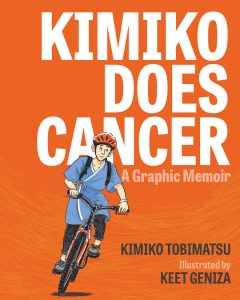Buy this from Bookshop.org to support local bookstores and the Lesbrary! Brooms is a YA graphic novel created by Jasmine Walls (writer) and Teo DuVall (illustrator) and published in 2023 by Levine Querido. It is set in an alternate 1930s Mississippi where magic flows all around, but is heavily restricted. Only certain people are allowed toRead More
A Dazzling Debut: How Far the Light Reaches by Sabrina Imbler
Buy this from Bookshop.org to support local bookstores and the Lesbrary! I first learned about Sabrina Imbler (they/them) last year when my girlfriend and I traveled to Seattle to watch the UConn Women’s Basketball team compete in the Sweet 16. Whenever I travel, I like to visit a local bookstore, which is how we endedRead More
A Sapphic, Filipino Horror Comedy: Damned If You Do by Alex Brown
Bookshop.org Affiliate Link Filled with imagery and stories from Filipino folklore, Damned If You Do follows high school stage manager Cordelia Scott, as she prepares to put on the annual school play, struggles with passing her classes and imagining a future for herself, and tries to push down her not-so-subtle crush on her childhood best friend, Veronica.Read More
Danika reviews Bad Things Happen Here by Rebecca Barrow
Amazon Affiliate Link | Bookshop.org Affiliate Link One of my favourite YA books is This is What it Feels Like by Rebecca Barrow, so when I saw Barrow was coming out with another sapphic YA title, I knew I had to pick it up. But while This Is What It Feels Like is a heartwarmingRead More
Danika reviews Kimiko Does Cancer: A Graphic Memoir by Kimiko Tobimatsu, illustrated by Keet Geniza
Kimiko Does Cancer is about about a queer, mixed-race woman getting breast cancer. This is a short book, only 106 pages, and it moves quickly: the first page is about Kimiko finding a lump above her breast, and then it moves through her diagnosis, treatment, and the aftermath. Tobimatsu explains in interviews/articles that she wantedRead More

